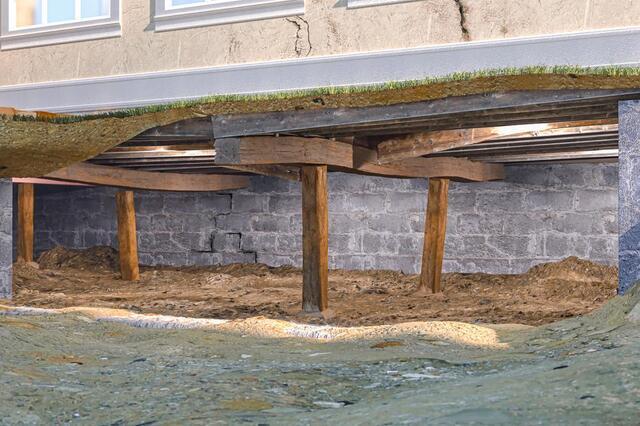Is Your Crawlspace Home Telling You Something? Signs of Foundation Failure in Louisiana.
1. Uneven or Sagging Floors
Have you ever walked through your house and suddenly felt like you were walking downhill? Or maybe you’ve noticed that one corner of a room feels bouncier or softer than the rest? Crawlspace homes often develop sagging floors when the wooden joists or beams lose support due to shifting piers or moisture damage. In Louisiana, where water is constantly testing the limits of your crawlspace, this is one of the most common red flags.
2. Cracks in the Walls or Ceilings
We’re not talking about hairline cracks from old paint jobs—we mean larger, more diagonal cracks that seem to grow over time. These usually pop up around door frames, windows, or where walls meet ceilings. As the foundation shifts, your home’s frame moves with it, leading to stress fractures. In crawlspace homes, that movement is often a result of settling piers or weakened supports underneath.
3. Doors and Windows That Stick (or Don’t Close Right)
Louisiana humidity is famous for swelling doors, but if you’re constantly struggling with windows that won’t shut or doors that drag along the floor, you might have more than just swollen wood. When your foundation shifts, it throws off the alignment of your home—especially the parts that are supposed to open and close smoothly.
4. Moisture and Mold in the Crawlspace
If you don’t remember the last time you checked your crawlspace, now’s a good time. Excess moisture, musty smells, visible mold, or even pooling water can be signs that your crawlspace isn’t draining properly. In many cases, water intrusion causes wood rot and weakens the very structure holding your house up. This is especially important in South Louisiana where elevated water tables and heavy rainfall are the norm.
5. Gaps Between the Floor and Baseboards
It may start as a tiny space, but over time, that gap between your floors and baseboards can grow. This is a classic sign of the floor separating from the walls as the center of your home sinks or sags. It’s a visual cue that your crawlspace might be failing.
6. Outside Warning Signs: Skewed Piers or Tilting Chimneys
Don’t forget to take a walk around the outside of your house. Look underneath if you can—are the support piers still sitting flush and level? Do any look like they’re leaning or sinking into the soil? Also check for cracks in exterior brick, tilting chimneys, or stair-step cracks in masonry—these are all exterior cries for help.
What Causes These Issues in Louisiana?
Our state’s soil is a big part of the problem. The combination of clay-heavy ground, frequent rain, and flooding causes soil to expand and contract. This movement wreaks havoc on crawlspace foundations. Add in humidity and poor drainage, and you’ve got a recipe for trouble.
What Should You Do if You Notice These Signs?
Don’t panic—but don’t wait. Foundation issues don’t fix themselves, and the longer you wait, the more expensive and invasive the repairs become. A professional foundation inspection can pinpoint the cause and recommend options like:
-
Installing SmartJacks to support sagging beams
-
Replacing or adding concrete piers for more stability
-
Sealing or encapsulating your crawlspace to fight moisture
-
Addressing drainage issues around your home
Bottom Line: Listen to Your Home
Your crawlspace home is built to last, but Louisiana’s environment doesn’t make it easy. If you notice the signs—uneven floors, sticking doors, growing cracks—trust your instincts and get it checked out. A solid foundation means a safe, stable, and stress-free home.
And if you ever need help? Reliable, local professionals (like us!) are always ready to crawl in the mud so you don’t have to.

